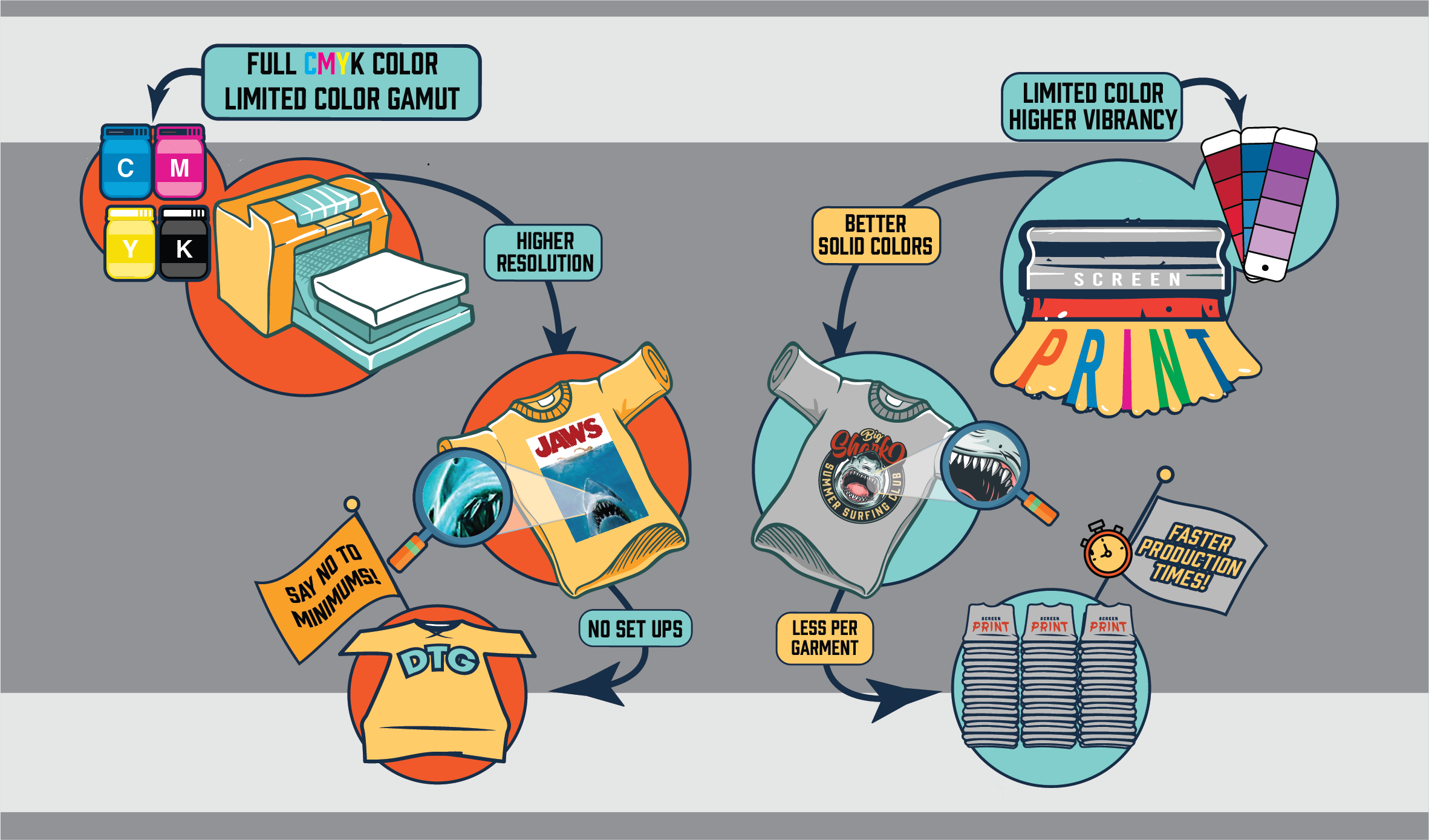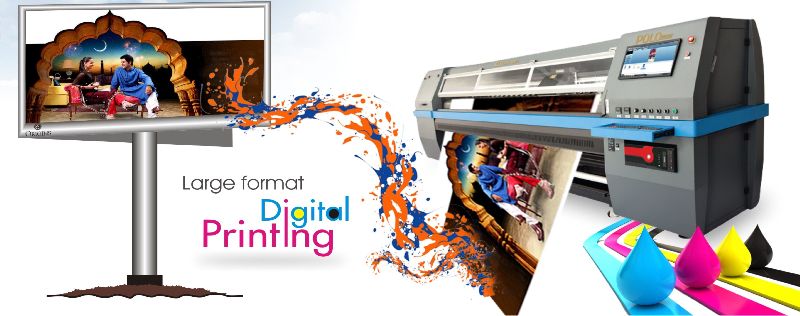Why Digital Printing Is the Go-To Choice for On-Demand Print Solutions
Comprehending the Importance of Digital Printing in Today's Affordable Landscape
In the context of today's extremely affordable market, the significance of electronic printing can not be overlooked. As businesses seek to refine their techniques, comprehending just how digital printing integrates into broader advertising and operational goals is necessary. What effects does this have for future company methods and customer connections?
Benefits of Digital Printing
Digital printing uses a number of considerable benefits that make it a recommended selection for several organizations and people. Among the most remarkable benefits is its capacity to generate high-quality prints with complex details and dynamic colors. This is specifically vital for advertising and marketing products, where aesthetic allure can substantially affect consumer engagement.
In addition, electronic printing promotes fast turn-around times, enabling businesses to react quickly to market demands or advertising opportunities. Unlike traditional printing approaches that need comprehensive arrangement and longer manufacturing times, digital printing allows for immediate result, making it perfect for time-sensitive tasks.
Personalization is another vital advantage of electronic printing. It sustains variable data printing, which enables customized content in each print run. This function is particularly helpful for straight advertising projects, where tailored messages can boost client link and boost reaction prices.
Additionally, digital printing reduces waste by enabling tiny print runs without incurring significant costs. This capability not just sustains sustainability initiatives but also supplies adaptability for organizations to test new styles or items without dedicating to huge amounts.
Cost-Effectiveness and Efficiency
The cost-effectiveness and efficiency of digital printing make it an appealing alternative for organizations seeking to maximize their printing procedures. Unlike traditional printing methods, which typically need considerable arrangement and large print runs to warrant costs, digital printing enables shorter runs without compromising quality. This versatility dramatically lowers waste and supply expenses, making it possible for businesses to print only what they require, when they require it.
Moreover, electronic printing minimizes the turnaround time for tasks. With automated processes and on-demand abilities, companies can respond promptly to market demands, thereby enhancing their affordable edge. The elimination of costly pre-press phases, such as plate production and lengthy setup times, even more contributes to operational performance.
In addition, digital printing technologies have progressed, leading to lower per-unit expenses over time. As a result, digital printing ends up being not just a useful selection but likewise a strategic investment in a swiftly developing industry.
Personalization and Customization
In today's competitive landscape, the capability to supply customization and personalization in printing has come to be an important differentiator for organizations. Digital printing technology permits organizations to produce tailored products that satisfy details customer demands and choices. By leveraging variable data printing, companies can create products that include unique text, pictures, or styles for each and every recipient, improving the importance and influence of marketing efforts.
This ability not just cultivates a much deeper connection with clients however likewise allows organizations to stand out in a congested industry. Individualized pamphlets, direct mail campaigns, and promotional items can lead to greater involvement prices and boosted client loyalty. The versatility of digital printing helps with short runs and quick turn-around times, allowing businesses to react quickly to market trends or specific client requests.

Ecological Effect
As companies significantly concentrate on customization and customization to enhance consumer interaction, attention has to likewise transform to the environmental implications of printing methods. Digital printing offers several advantages in this context, mainly via its capability to lower waste and reduce source usage. Unlike traditional printing methods that often need extensive configuration and generate considerable excess products, digital printing allows on-demand manufacturing. This capability enables firms to print just what is necessary, consequently lowering overproduction my sources and linked waste.
Moreover, innovations in electronic printing technology have resulted in making use of green inks and substratums. Water-based and vegetable-based inks are becoming much more common, reducing the discharge of unstable organic compounds (VOCs) and improving recyclability. Furthermore, many digital printers are developed to be energy-efficient, taking in less power during operation compared to their conventional counterparts.
The shift towards sustainable techniques is not just a governing response; it is also a strategic business decision. Firms that take on eco liable printing procedures can improve their brand photo, allure to eco-conscious customers, and contribute to wider sustainability goals. In this affordable landscape, incorporating environmental considerations into printing techniques is essential for lasting success and business obligation.
Future Trends in Digital Printing
Arising modern technologies are poised to transform the landscape of digital printing, driving development and performance in the market. As improvements in man-made knowledge and artificial intelligence continue to progress, the ability to automate procedures and improve customization will come to be a cornerstone of electronic printing (digital printing). These technologies will allow printers to assess customer data, permitting for very customized print items that accommodate certain market needs
Furthermore, the assimilation of 3D printing within traditional digital printing structures is expected to develop brand-new methods for product growth. This merging will promote the production of intricate layouts and prototypes more swiftly and cost-effectively than ever before.
Sustainability will likewise play an important duty fit the future of electronic printing. As environmental issues intensify, eco-friendly inks and substratums are prepared for to gain grip, advertising a greener printing process.
Moreover, the rise of on-demand printing will certainly shift the emphasis from large-scale manufacturing goes to smaller, extra adaptable orders, lowering waste and supply prices. Collectively, these fads signify a transformative era in digital printing, stressing flexibility, efficiency, and environmental consciousness in satisfying the needs of a developing industry.
Conclusion

The cost-effectiveness and efficiency of electronic printing make it an appealing option for organizations looking to optimize their printing procedures. Unlike traditional printing methods, which usually call for comprehensive arrangement and large print runs to warrant expenses, blog here digital printing allows for much shorter runs without compromising quality. The versatility of digital printing facilitates brief runs and fast turn-around times, enabling services to respond promptly to market patterns or individual client demands.
Unlike traditional printing methods that often need extensive configuration and generate substantial excess materials, electronic printing allows on-demand manufacturing. As digital printing continues to progress, its role in driving technology and functional effectiveness will be important for businesses looking for to maintain a competitive edge.